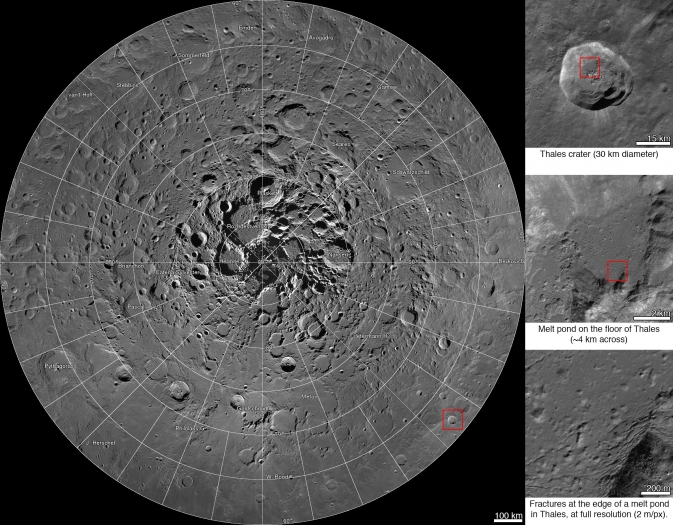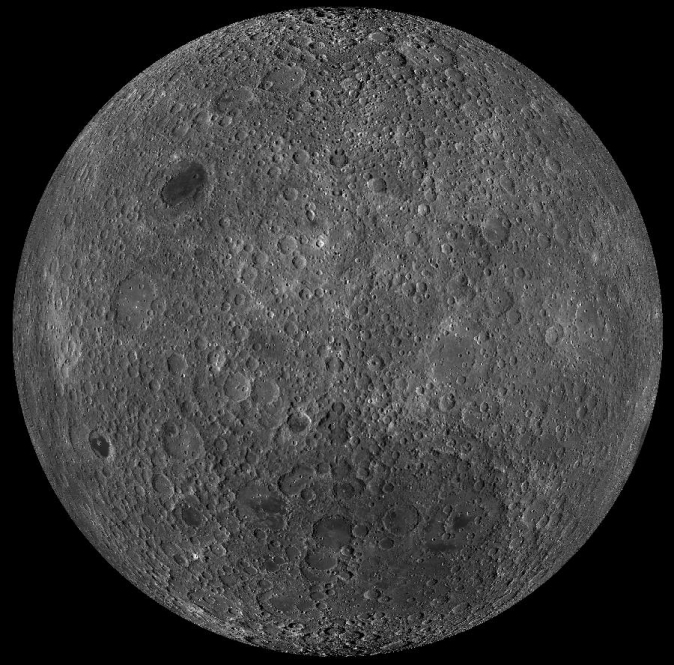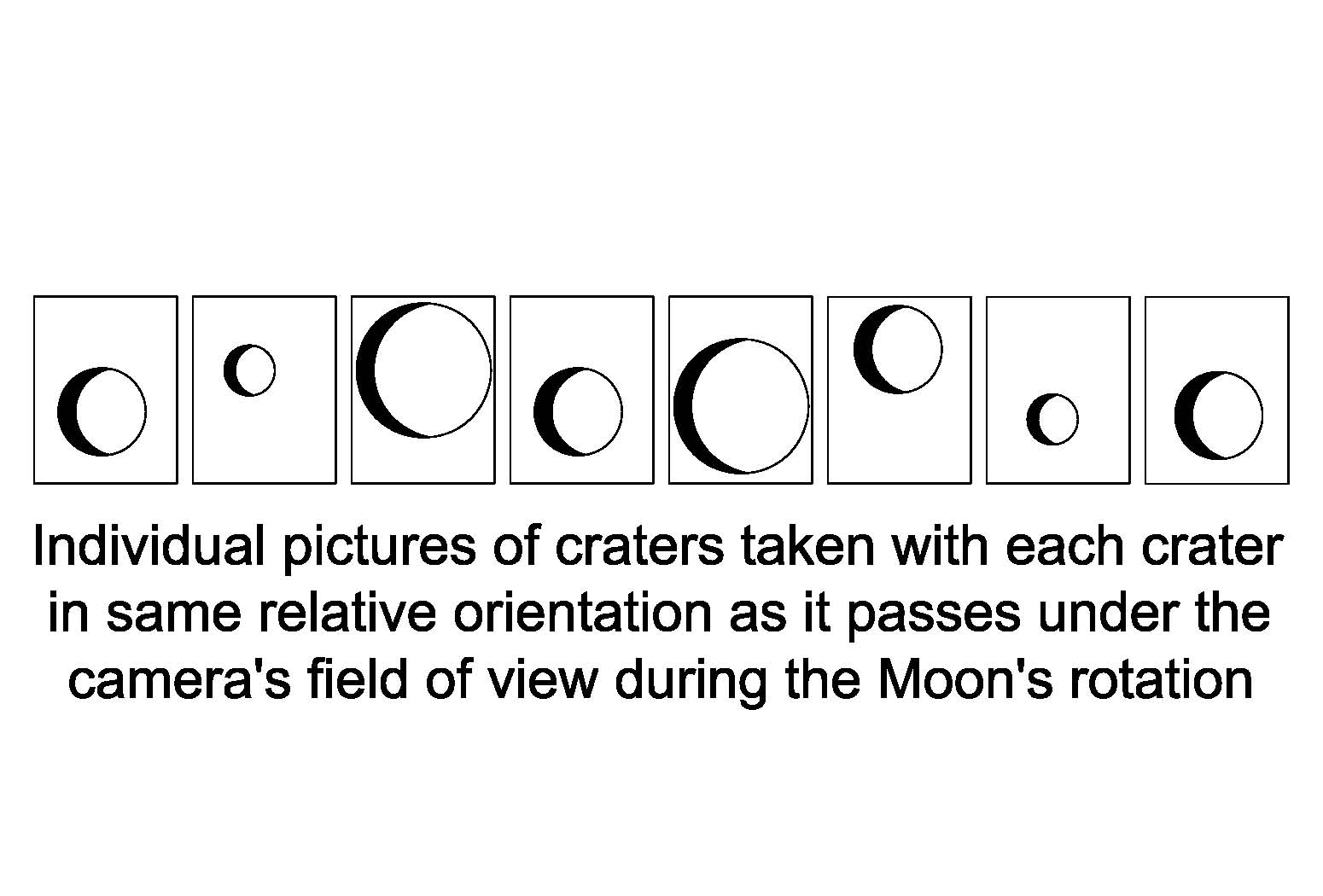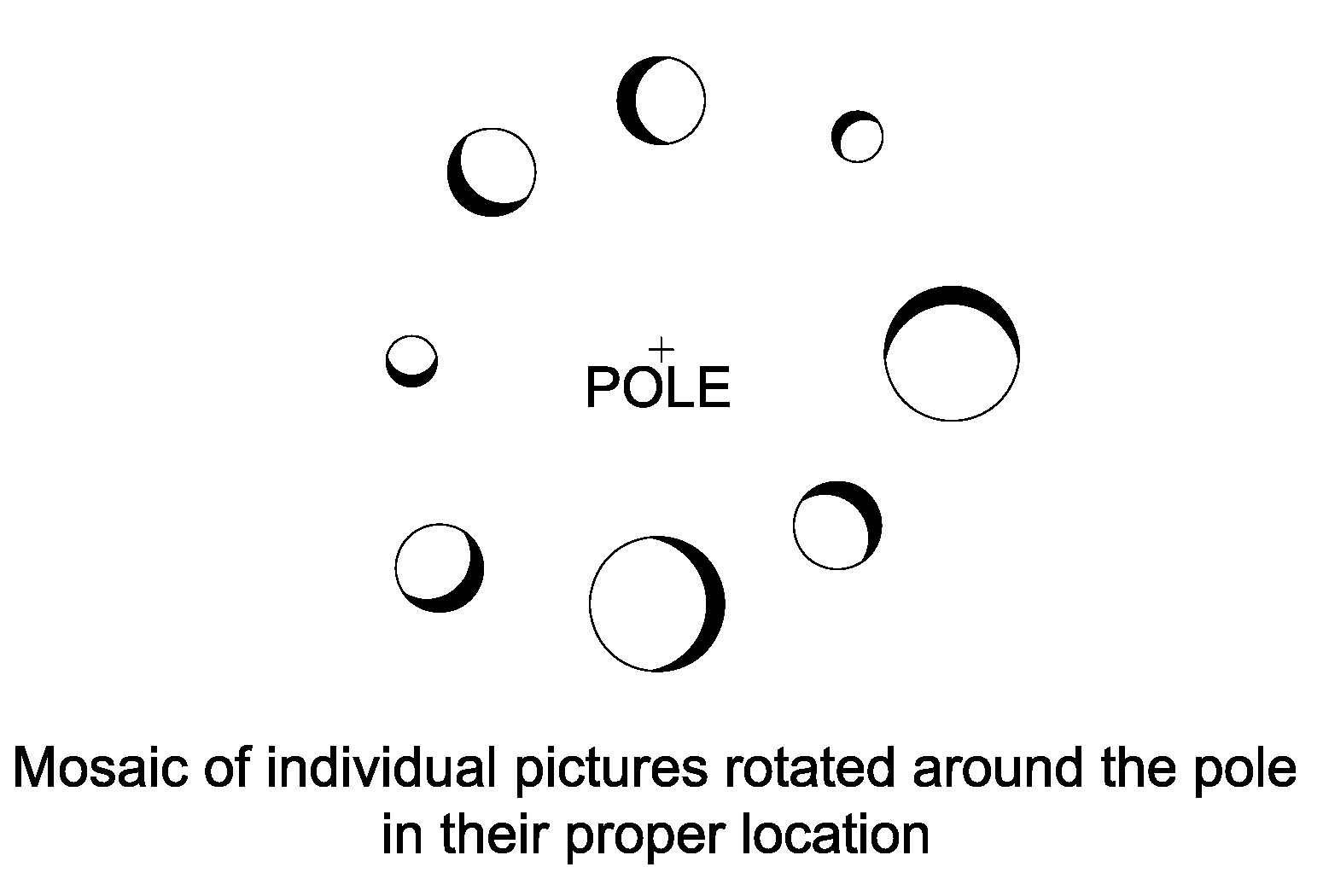It looks like you're using an Ad Blocker.
Please white-list or disable AboveTopSecret.com in your ad-blocking tool.
Thank you.
Some features of ATS will be disabled while you continue to use an ad-blocker.
share:
Scientists, using cameras aboard NASA's Lunar Reconnaissance Orbiter (LRO), have created the largest high resolution mosaic of our moon’s north polar region. The six-and-a-half feet (two-meters)-per-pixel images cover an area equal to more than one-quarter of the United States.

NASA NEWS
Web viewers can zoom in and out, and pan around an area. Constructed from 10,581 pictures, the mosaic provides enough detail to see textures and subtle shading of the lunar terrain. Consistent lighting throughout the images makes it easy to compare different regions.
"This unique image is a tremendous resource for scientists and the public alike," said John Keller, LRO project scientist at NASA's Goddard Space Flight Center, Greenbelt, Md. "It's the latest example of the exciting insights and data products LRO has been providing for nearly five years."
The images making up the mosaic were taken by the two LRO Narrow Angle Cameras, which are part of the instrument suite known as the Lunar Reconnaissance Orbiter Camera (LROC). The cameras can record a tremendous dynamic range of lit and shadowed areas.
"Creation of this giant mosaic took four years and a huge team effort across the LRO project," said Mark Robinson, principal investigator for the LROC at Arizona State University in Tempe. "We now have a nearly uniform map to unravel key science questions and find the best landing spots for future exploration."
Link to zoomable capability
I love stuff like this where you can play around zooming in and out the detail is phenomenal. The site says if it was all processed as a single file it would be 3.3 terabytes of data. If anyone spots a moon base let me know. Just kidding.
That's awesome.
Now...let's have one for the dark side of the moon.
Now...let's have one for the dark side of the moon.
WordsAreAvenues
That's awesome.
Now...let's have one for the dark side of the moon.
You surely mean the side we can't see....
Is it me or can anyone else see the spiral pattern of the craters?
When zoomed out on the zoomable link above.
When zoomed out on the zoomable link above.
reply to post by WordsAreAvenues
Indeed it is very awesome!
However I think you may mean the FAR side as opposed to the near side and some of it is showing in that north Luna pole mosaic supplied in the OP [a good 1/3 of the far side is already shown] and by the FAR side I obscurely also of course mean the south Luna pole and surely it too should be available as LROC would have traveled over both poles in the same orbit and taken pics [it is what it is designed and meant to do]!
They have only delivered half the payload of possible pictures taken with this mosaic and I look forward to further disclosure on the south Luna pole mosaic when it becomes available ... that is if Nasa is not hiding anything by this piecemeal service!
Indeed it is very awesome!
However I think you may mean the FAR side as opposed to the near side and some of it is showing in that north Luna pole mosaic supplied in the OP [a good 1/3 of the far side is already shown] and by the FAR side I obscurely also of course mean the south Luna pole and surely it too should be available as LROC would have traveled over both poles in the same orbit and taken pics [it is what it is designed and meant to do]!
They have only delivered half the payload of possible pictures taken with this mosaic and I look forward to further disclosure on the south Luna pole mosaic when it becomes available ... that is if Nasa is not hiding anything by this piecemeal service!
WordsAreAvenues
That's awesome.
Now...let's have one for the dark side of the moon.
The FAR side of the Moon has been imaged by the LRO just as well as the near side.
LRO QuickMap
LRO WMS Browser

WordsAreAvenues
That's awesome.
Now...let's have one for the dark side of the moon.
The far side of the Moon (there is no such thing as the "dark side" of the moon, considering both sides of the Moon get equal amounts of sunlight over the 27 +/- day lunar cycle) has already been photographed in detail, as "wildspace" has shown in his links about. Some of the images of the far side (and the near side) have a resolution as high as 30 cm per pixel -- which is a little larger than a basketball.
But if you were at a location on the "far side" side of the moon (the side facing away from Earth, what some people inaccurately call the "dark side") you would get about 2 weeks of sunlight and 2 weeks of darkness -- which is the same amount of sunlight and darkness for any point on the near side (the side facing Earth).
UKWO1Phot
Is it me or can anyone else see the spiral pattern of the craters?
When zoomed out on the zoomable link above.
That's probably due to the shadows in the craters. If you notice, the shadows are inconsistent if this was a single image taken at one time. The shadows are all on the same side of each crater if you rotate the moon so that the crater in question is at the same position -- say, for example if you rotate them to the "top" (12 o'clock) position of the pole.
However, this image is not one image, but a mosaic of many many images. These images were made over a 2-month period as the Moon rotated beneath the spacecraft/camera. The camera kept shooting in the same direction, but the rotation of the Moon itself allowed each part of the Moon to move into the camera's filed of view to be photographed.
That resulted in the shadow to always be on the same side of the crater, because when the mosaic is put together and the pieces are rotated around the pole, and the shadows also get rotated, creating the spiral effect. Similar to the example below:


The reason why the craters look rotated is because they are, and the rotation is adding to the spiral effect because of the shadows. Granted, not all of the shadows in the OP's image are in the same orientation when axially rotated (although my example shows them that way), but the trend in the OP's image is that many of them are.
edit on 3/20/2014 by Soylent Green Is People because: (no reason given)
minkmouse
WordsAreAvenues
That's awesome.
Now...let's have one for the dark side of the moon.
You surely mean the side we can't see....
Yes. What else would I have meant?
wildespace
WordsAreAvenues
That's awesome.
Now...let's have one for the dark side of the moon.
The FAR side of the Moon has been imaged by the LRO just as well as the near side.
Thanks. But why are you guys arguing about the semantics of "dark" and "far"? You obviously knew what I meant. I know the moon get equal sun, but it remains "dark" to us.
Sheesh.
edit on 20-3-2014 by WordsAreAvenues because: (no reason given)
WordsAreAvenues
wildespace
WordsAreAvenues
That's awesome.
Now...let's have one for the dark side of the moon.
The FAR side of the Moon has been imaged by the LRO just as well as the near side.
Thanks. But why are you guys arguing about the semantics of "dark" and "far"? You obviously knew what I meant. I know the moon get equal sun, but it remains "dark" to us.
Sheesh.edit on 20-3-2014 by WordsAreAvenues because: (no reason given)
No it remains unseen NOT dark but even that is not 100% true because from Earth we can actually see 59% of the moons surface.
WordsAreAvenues
wildespace
WordsAreAvenues
That's awesome.
Now...let's have one for the dark side of the moon.
The FAR side of the Moon has been imaged by the LRO just as well as the near side.
Thanks. But why are you guys arguing about the semantics of "dark" and "far"? You obviously knew what I meant. I know the moon get equal sun, but it remains "dark" to us.
Sheesh.edit on 20-3-2014 by WordsAreAvenues because: (no reason given)
To clarify, the far side remains "unseen", no matter the lighting of it.
When the Moon is in its "New Moon" phase as seen from Earth, the entire far side is fully lit by the Sun. When the moon is in its "full Moon" phase as seen from earth, the far side is fully in shadow. When 1/2 of the near side of the moon is visibly lit when seen from earth, 1/2 of the far side is also lit, but unseen from Earth.
In short (about) 1/2 of the Moon is ALWAYS lit by the sun and (about) 1/2 is in shade. What varies is what parts of that lighting and shadow can be seen from here on Earth.
reply to post by wildespace
The far side has never been seen by a video camera. The LRO image is a composite of data from the laser altimeter and the 'camera' sensors that are ultrasensitive and go into the IR. The Westinghouse 3 tube colour camera with the f/0.7 lens that Kubrick ended up with saw nothing when the military sent an orbiter arounfd the Moon.
Hopefully though,NASA will soon have one of these on the ISS, or send one around the Moon to give us some REAL video of the lunar surface. And it can even video the Milky Way, so now we will be able to see what the heavens look like from the ISS. ;-)
Canon Unveils a 35mm Full Frame Sensor for Video That Can See in the Dark
petapixel.com...
The FAR side of the Moon has been imaged by the LRO just as well as the near side.
The far side has never been seen by a video camera. The LRO image is a composite of data from the laser altimeter and the 'camera' sensors that are ultrasensitive and go into the IR. The Westinghouse 3 tube colour camera with the f/0.7 lens that Kubrick ended up with saw nothing when the military sent an orbiter arounfd the Moon.
Hopefully though,NASA will soon have one of these on the ISS, or send one around the Moon to give us some REAL video of the lunar surface. And it can even video the Milky Way, so now we will be able to see what the heavens look like from the ISS. ;-)
Canon Unveils a 35mm Full Frame Sensor for Video That Can See in the Dark
petapixel.com...
GaryN
reply to post by wildespace
The FAR side of the Moon has been imaged by the LRO just as well as the near side.
The far side has never been seen by a video camera. The LRO image is a composite of data from the laser altimeter and the 'camera' sensors that are ultrasensitive and go into the IR. The Westinghouse 3 tube colour camera with the f/0.7 lens that Kubrick ended up with saw nothing when the military sent an orbiter arounfd the Moon.
Hopefully though,NASA will soon have one of these on the ISS, or send one around the Moon to give us some REAL video of the lunar surface. And it can even video the Milky Way, so now we will be able to see what the heavens look like from the ISS. ;-)
Canon Unveils a 35mm Full Frame Sensor for Video That Can See in the Dark
petapixel.com...
I don't get what you are saying. Why would it need to see in the dark? Why not just photograph the far side when it is fully lit by the Sun, just like we can photograph the near side when it is lit by the Sun?
What does "Far side versus Near side" have anything at all to do with "seeing in the dark"? The far side is in sunlight just as much as the near side is during one lunar cycle, so there is no reason for you to single out the far side. Any spacecraft in orbit that can photograph the near side can do the same with the far side.
edit on 3/20/2014 by Box of Rain because: (no reason given)
GaryN
reply to post by wildespace
The FAR side of the Moon has been imaged by the LRO just as well as the near side.
The far side has never been seen by a video camera. The LRO image is a composite of data from the laser altimeter and the 'camera' sensors that are ultrasensitive and go into the IR. The Westinghouse 3 tube colour camera with the f/0.7 lens that Kubrick ended up with saw nothing when the military sent an orbiter arounfd the Moon.
Hopefully though,NASA will soon have one of these on the ISS, or send one around the Moon to give us some REAL video of the lunar surface. And it can even video the Milky Way, so now we will be able to see what the heavens look like from the ISS. ;-)
Canon Unveils a 35mm Full Frame Sensor for Video That Can See in the Dark
petapixel.com...
I posted a THREAD last year about that Canon sensor
www.abovetopsecret.com...
Why do you think you need video and a f0.7 aperture
LRO Camera Specs
All digital cameras can see part of the IR spectrum just point an IR remote at one and press a button while looking at viewfinder/rear screen.
GaryN
reply to post by wildespace
The FAR side of the Moon has been imaged by the LRO just as well as the near side.
The far side has never been seen by a video camera.
Depends on what you mean by a video camera. The Apollo missions took plenty of 16mm film of the lunar far side, and every Earthrise film starts with a piece of the moon you can't see from here.
onebigmonkey
GaryN
reply to post by wildespace
The FAR side of the Moon has been imaged by the LRO just as well as the near side.
The far side has never been seen by a video camera.
Depends on what you mean by a video camera. The Apollo missions took plenty of 16mm film of the lunar far side, and every Earthrise film starts with a piece of the moon you can't see from here.
Yes. Apollo 10 made a nice Earthrise film which, by definition, started on the far side of the moon.
Here is another nice example made by Japan's Kaguya orbiter. The Earth was full (as seen from the POV of the moon) in this video, which means that the near side of the moon would be in darkness while the far side is lit. That's because if the Earth looks full from the Moon, then the Moon (as seen from Earth) would appear to be in the "New moon" phase:
Japan's Kaguya Earthrise:
I'm still not sure why GaryN says it would be too dark.
edit on 3/20/2014 by Box of Rain because: (no reason given)
reply to post by Box of Rain
Well GaryN has this DAFT theory that no camera or your eyes will see an image in space unless the light passes through some kind of medium like an atmosphere look at his post history!
Well GaryN has this DAFT theory that no camera or your eyes will see an image in space unless the light passes through some kind of medium like an atmosphere look at his post history!
wmd_2008
reply to post by Box of Rain
Well GaryN has this DAFT theory that no camera or your eyes will see an image in space unless the light passes through some kind of medium like an atmosphere look at his post history!
Yes, that is a daft theory.
However, his assertion seemed to be that the far side (he singled out the far side) would be too dark for a camera to work. My confusion is about why did he single out the far side? It gets just as much light as the near side during a lunar cycle, so why not say that the near side would be too dark for video (and he has not claimed that it WOULD be too dark on the near side).
If a spot of the far side is in too much darkness to show up in a video, then simply wait two weeks and it will be as bright as the near side can be.
new topics
-
Speaking of Pandemics
General Conspiracies: 59 minutes ago -
Stuck Farmer And His Queue Jumping Spawn
Rant: 1 hours ago -
Paradox of Progress
Ancient & Lost Civilizations: 9 hours ago -
Joe Biden gives the USA's Highest Civilian Honor Award to Hillary Clinton and George Soros.
US Political Madness: 11 hours ago
top topics
-
Joe Biden gives the USA's Highest Civilian Honor Award to Hillary Clinton and George Soros.
US Political Madness: 11 hours ago, 13 flags -
Winter Storm
Fragile Earth: 12 hours ago, 7 flags -
A great artist and storyteller, for kids of all ages
General Entertainment: 14 hours ago, 6 flags -
Paradox of Progress
Ancient & Lost Civilizations: 9 hours ago, 6 flags -
Biden Face Planted Somewhere
Politicians & People: 14 hours ago, 5 flags -
Stuck Farmer And His Queue Jumping Spawn
Rant: 1 hours ago, 1 flags -
Speaking of Pandemics
General Conspiracies: 59 minutes ago, 0 flags
active topics
-
The theory that COVID-19 originated in China takes a body blow.
Diseases and Pandemics • 57 • : Lazy88 -
FIEND SLASHED: Sara Sharif’s killer dad ‘has neck & face sliced open with jagged tuna tin lid
Mainstream News • 21 • : Asktheanimals -
Post A Funny (T&C Friendly) Pic Part IV: The LOL awakens!
General Chit Chat • 7989 • : Flyingclaydisk -
A great artist and storyteller, for kids of all ages
General Entertainment • 2 • : Asktheanimals -
Nigel Farage's New Year Message.
Politicians & People • 21 • : gortex -
Speaking of Pandemics
General Conspiracies • 2 • : Flyingclaydisk -
Stuck Farmer And His Queue Jumping Spawn
Rant • 0 • : TimBurr -
The Future of fashion .
Social Issues and Civil Unrest • 20 • : Flyingclaydisk -
NJ Drones tied to Tesla explosion at Trump Las vegas
General Conspiracies • 46 • : Flyingclaydisk -
Tesla Cybertruck Explodes in Front of Trump Hotel in Las Vegas
Mainstream News • 222 • : Flyingclaydisk
